Winemaking
Uco Valley, in the southernmost part of Mendoza in Argentina and it has received five geographical designations of origin where the vines grow in rocky & alluvial soil at high altitude, between 1100 and 1700 meters above sea level. Couce Vineyards is located at Los Chacayes.
Farming alluvial soil at an altitude of 1100 meters is not an easy task, but it is proven to give us highest quality of wines in the region. Alluvial soil is form by deposition of alluvium and sediments carried by rivers and sea waves over many years, which make the soil very fertile. It consists of various proportions of sand, silt, and clay. It is also rich in organic nutrients.
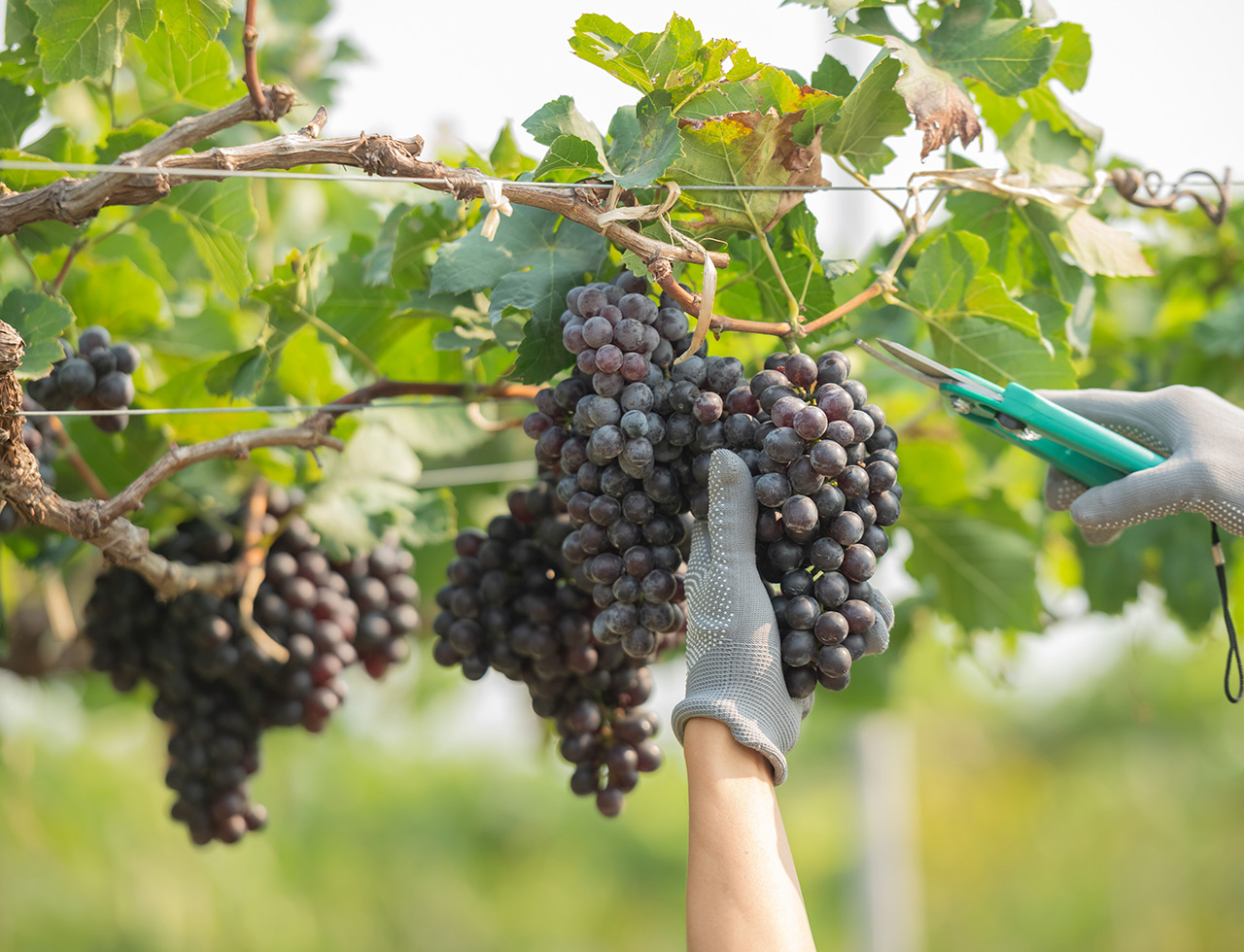
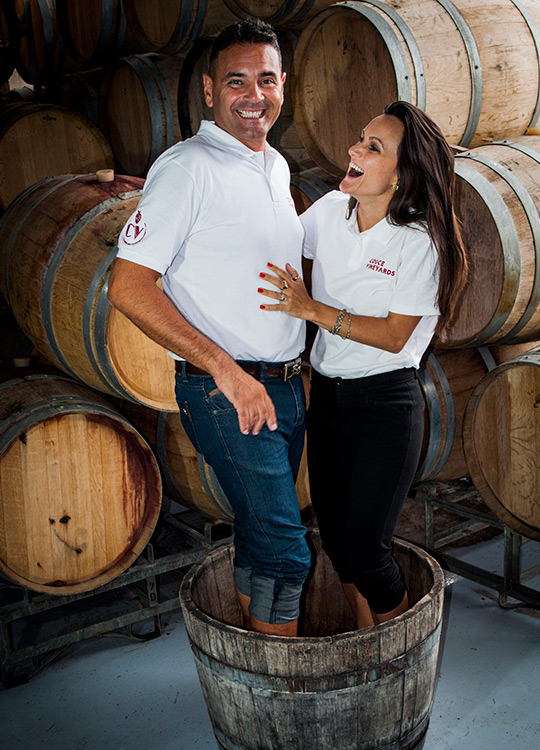
All year long during the farming process we aim to take care of what is going to be the essence of our wines: the grapes.
The way we prune is one of them. We prune 2 buds per spur if the vigor of the plant is medium or strong & if the vigor is very strong, we increase the number of spurs per cordon. Low caliber spurs will be pruned to 1 shoot. We love spur spacing to run at 4.5 inches.
Just one more thing we do to get the highest quality of wines.
Leaf removal is another way to improve grape and thus wine quality.
At Uco Valley leaf removal will take place on the “east” front of the vineyards once the cluster is formed. After the initial defoliation, the results are reviewed and defoliation will be added if necessary.
An additional defoliation might be applied inside the plant and on the “west” front of the vineyard, approximately 3 weeks before harvest.

Harvest for Couce Vineyards is all about low quantity and high quality. During veraison the fruit clusters are reduced to 1 cluster per branch that improves the concentration which helps us later on to the harvest the best grapes possible. This takes the average vineyard yield per acre to around 1500 kg/acre. At that moment we know we have an impeccable raw material to start the production process.
Tannins, sugar, acid and ripeness are the main characteristics we take into account when it comes to deciding the harvesting moment. Every time a new vine is planted, you need to wait between 3 and 5 years before its grapes are good for wine production. Ours were planted in 2011 and we started with Couce Vineyards in 2020.
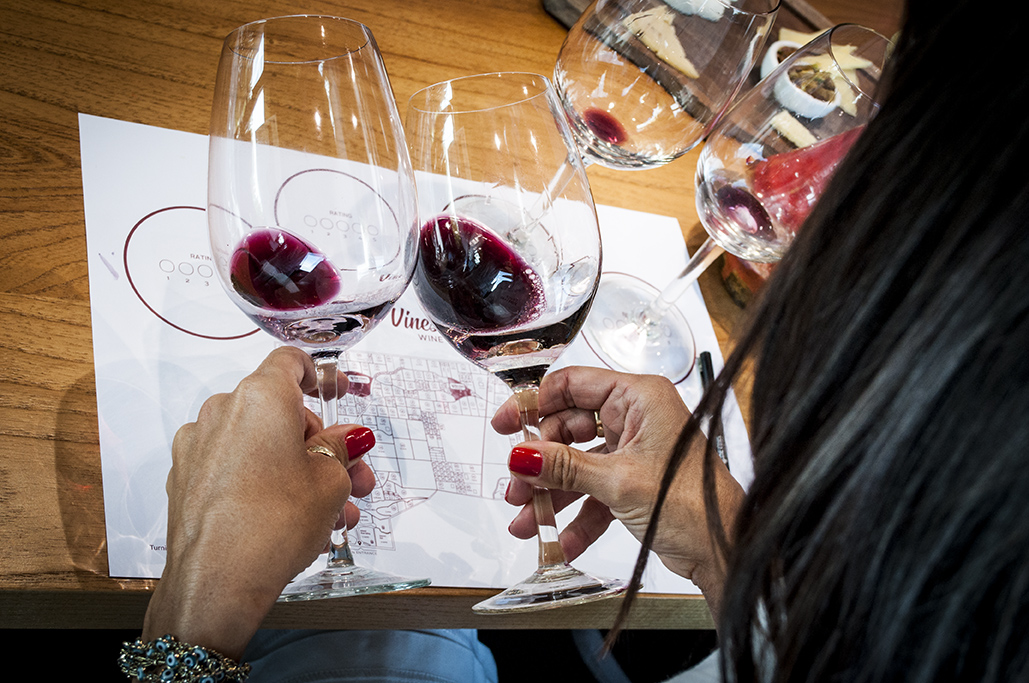
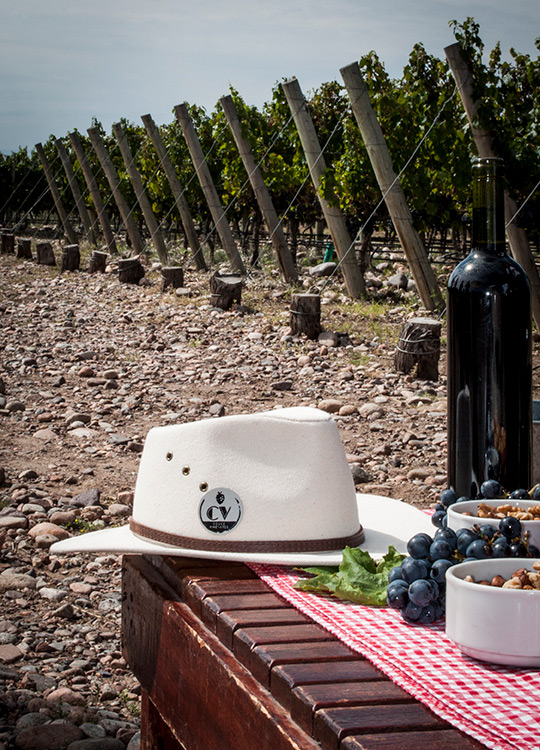
The timing of when to press is one of the most important decisions in the wine making process since that will be the moment that maceration and phenolic extraction ceases. Sometimes we use the decreasing sugar level, such as brix measurement, scale and press once the wine has reached complete dryness.
Brix is a way to measure the potential alcohol content of a wine before it’s made by determining the sugar level in grapes. Each gram of sugar that’s fermented will turn into about a 1/2 gram of alcohol.

Often, we will use taste to determine if the wine has extracted enough tannins to produce a balanced wine and may press before complete dryness (such as at 3-8 brix). Though removing the skins by pressing often removes some solids that the wine yeast need to complete fermentation and the benefits of pressing early is often balanced by the risk of potential stuck fermentation.
The quality of the vintage year and the overall ripeness of the harvested grapes may also play a role since in cool years when the grapes are often harvested under-ripe, the tannins in the grape are often very “green” and harsh. In these years we might press early (such as at 15 brix). In warmer years, the tannins may be full ripe or “sweet” so we may decide to do a period of extended maceration and not press the grapes for as long as a month after fermentation has completed.
Usually, the pressed juice will require some additional treatment, which can be done separately to the pressed juice alone or to the entire batch of wine if the pressed juice is blended with the free-run. These treatments may include acid adjustments to lower pH, extended settling periods for clarification and additional racking to remove the extra suspended solids and the use of fining agents to remove extra solids or excess tannins.
Fermentation is another key moment of our wine making process. For the wine to ferment, we add yeast to the grape juice. These yeasts convert the natural sugars of the grapes into ethanol and carbon dioxide, which is a byproduct that gets released into the atmosphere and isn’t important for the wine.
These complex chemical reactions affect the flavor, aroma & even the color of our finished wine.
We aim to get best balance between these 5 characteristics: sweetness, acidity, tannins, alcohol & body. Before going to aging we work on the clarification process. The temperature range between 32°F to 35°F is the most beneficial to the wine for several reasons: It would allow proteins such as yeast, tannin, and others to drop out of the wine efficiently & thoroughly, leaving behind a crispy clear wine.
We age our wines between 8 and 22 months. It is very unusual to use 100% French oak barrels and that is what we use.
During aging in these barrels our wines colors improve. Flavor becomes more complex and mellow as wood flavor is extracted from the container, various substances in the wine become oxidized, and complex compounds of acids and alcohol are formed. Oak barrels contributes with the following aromas: vanilla, coffee roasting, spices, and a somewhat burnt character. But oak barrels have other properties besides adding aromas to the wine. There is a slow oxidation, which is beneficial for the wine, the tannins soften, the wine becomes fuller and rounder. Sucrosité is usually the word used in French. This process stabilizes the phenols, tannins and colors.
Alegra Alamela ages in French oak barrels for 8 months while Alegra Reserva ages in first-use French oak barrels for 22 months.
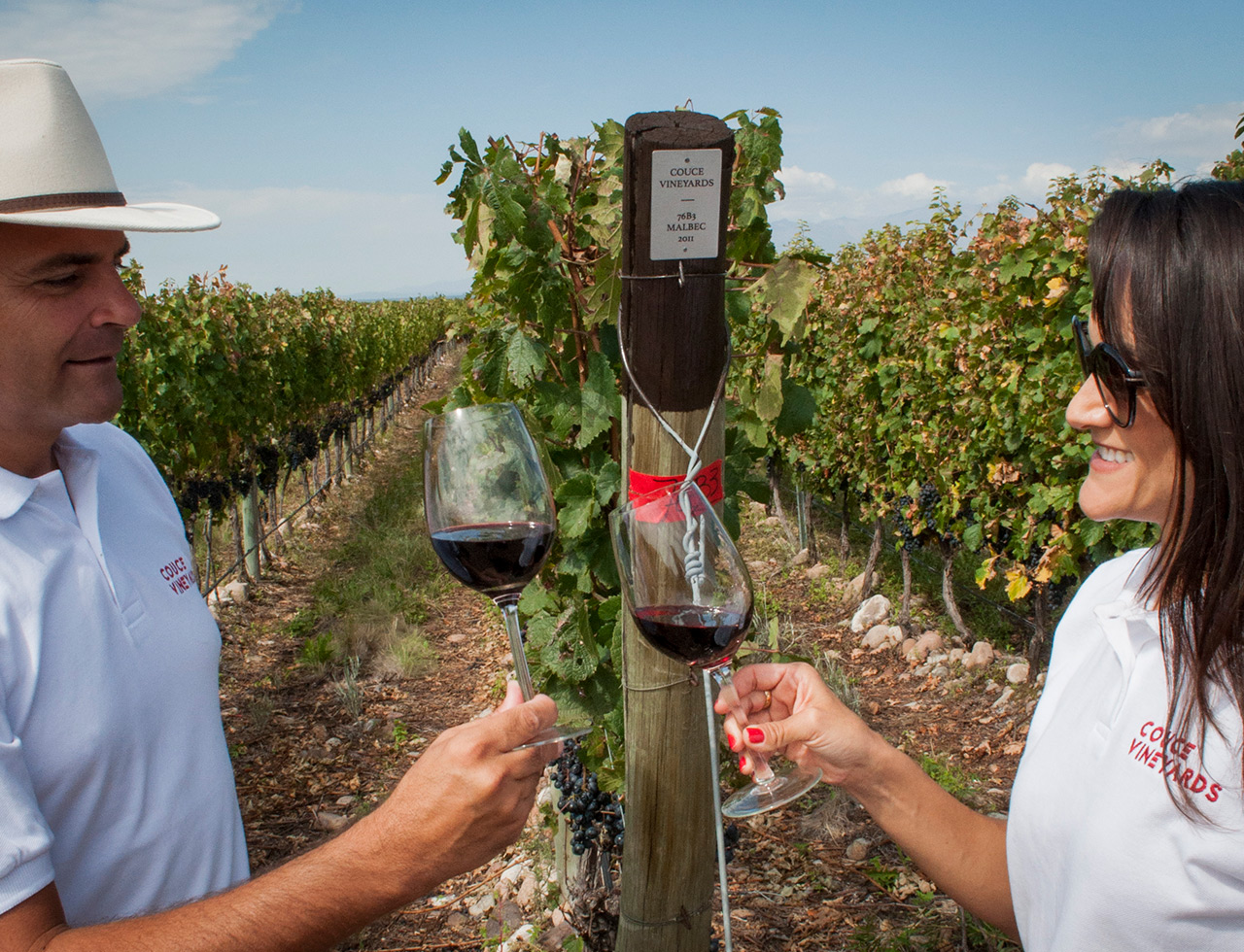
Once they are ready the process continues to the bottling line.
During bottling, wine undergoes multiple operations: pumping, filtration, filling and corking or capping. These operations are particularly conducive to the dissolution of oxygen in wines. At each transfer, and with each treatment, oxygen may penetrate and dissolve in the wine, with an average pickup (introduction) of 1.6 mg/L. As wine progresses through bottling, a so-called “U-curve” of dissolved oxygen occurs. High amounts of oxygen are introduced at the beginning and end of the bottling process, and lower and steady levels are common in the middle of a bottling lot.
Now you know one more of our secrets to produce wines at its the best.
We use different type of corks as their porosity & raw material provide us with different benefits for the needs of each wine.
For the Alegra Alamela we use a cork called Delta (micro agglomerate), where cork shavings are used with the addition of a binder which give it a particular tonality. It has less porosity allowing less oxygenation of the wine.
On the other hand, the cork used for the Alegra Reserva is a Natural cork. This is manually extracted from the cork oak and specifically treated to be used as a stopper for wines. This cork is a renewable and exceptionally sustainable natural resource. Its porosity allows the best aging of our wine with Ultra-Premium quality, facilitating micro-oxygenation that contributes to the harmony of the wine, providing roundness of tannins and a better balance.
Our quality professionals carry out a series of analyzes to the corks including a TCA Analysis (Trichloroanisole), Capillarity Analysis, Adhesive Analysis, Visual Control Analysis and % of Humidity.
We then store and age your wines in the bottle for another 10 months. They must be in a dark and mainly undisturbed place with a reasonably constant temperature. Wine should be aged in darkness because light can create some unwanted results in the wine. It is thought that light–which often coincides with heat–can alter the natural aging process of wine by oxidizing it.
Wine is a complex combination of many chemical compounds, which change as they interact with each other and their environment. Intricate reactions between the acids, sugars, alcohols, esters and phenolic compounds in wine are what modify the aromas in the bottle. When we age wine, we hope for changes that cause the wine to mature well by gaining a complex mix of complimentary flavors. As the chemical reactions that take place during aging vary between grape varietals, regions, and even crops from year to year, they are not easily quantifiable, and we are not yet at a point from which we can predict exactly what flavors a wine will develop as it ages. But what we do know is that as the compounds in wine react over time, they create new flavors, changing the original product into something more complex and subtle.
The wide variety of subtle reactions that take place as wine ages require very specific conditions to create an optimal product. These are: a stable temperature of around 55°, a relative humidity of around 70%, and protection from direct light.
Wine experts have been able to quantify what the Romans knew to be true thousands of years ago: wines age best under cool conditions. An 18° increase from the 55° baseline doubles the rate of chemical reactions in wine. But if chemical reactions age the wine, why not increase the temperature and get a decade’s worth of flavor complexity in a few years? Unfortunately, there are no such shortcuts. A temperature of 55° is the perfect environment for the chemical reactions that result in good wine. But it’s too cold to allow other, undesirable reactions that can give a wine unwanted aroma. Even a short exposure to extreme temperatures can trigger unwanted reactions and ruin the wine. Wine ages best at a temperature that is both cool and constant.
A humidity of around 70% is ideal for aging wine. A too-humid environment will cause mold to form on the cork, possibly contaminating the wine. Not enough humidity, and the cork will dry out and crack. A too-dry environment will also cause wine to rapidly evaporate from the bottle, creating a vacuum that sucks in oxygen-rich air. Too much oxidation, as we have seen, turns wine sour.
Exposure to too much ultraviolet (UV) light will cause the otherwise stable organic compounds in wine to degrade. These organic compounds contribute much to the finished product. As we’ve seen, phenolic compounds and esters create taste, and tannins contribute to the wine’s structure. The deterioration of these essential compounds will cause the wine to become flavorless. Usually, limited exposure to light won’t damage a wine, but if you’re intending to invest a lot of time in aging a wine, you should play it safe and store your wines in a dark place. When choosing a cabinet for aging wine, be sure to select one with solid or UV-resistant doors.
Wine aging is a science. A single bottle of wine can contain hundreds of chemical compounds that react over time. The reactions common to each type of wine are understood, and the type of changes in aroma that occur in them are rarely surprising. But wine aging is also an art. Each crop of grapes is different. Each bottle of wine will age a little differently from the next; the perfect time to uncork a particular grape varietal will change with the region, the year, and the specific process the grapes undergo as they are being smashed and fermented into wine.
Ultimately, it’s all about balance. A perfectly aged wine will have an optimal combination of three things: fruit flavors, fermentation flavors, and aging flavors. Whether this takes a year and a half or more than ten years depends on the bottle and the conditions it is kept in. Understanding the science behind wine aging can’t provide a magic formula that tells us when to open that particular Malbec, but it can help us understand why it needs to be kept under controlled conditions.
